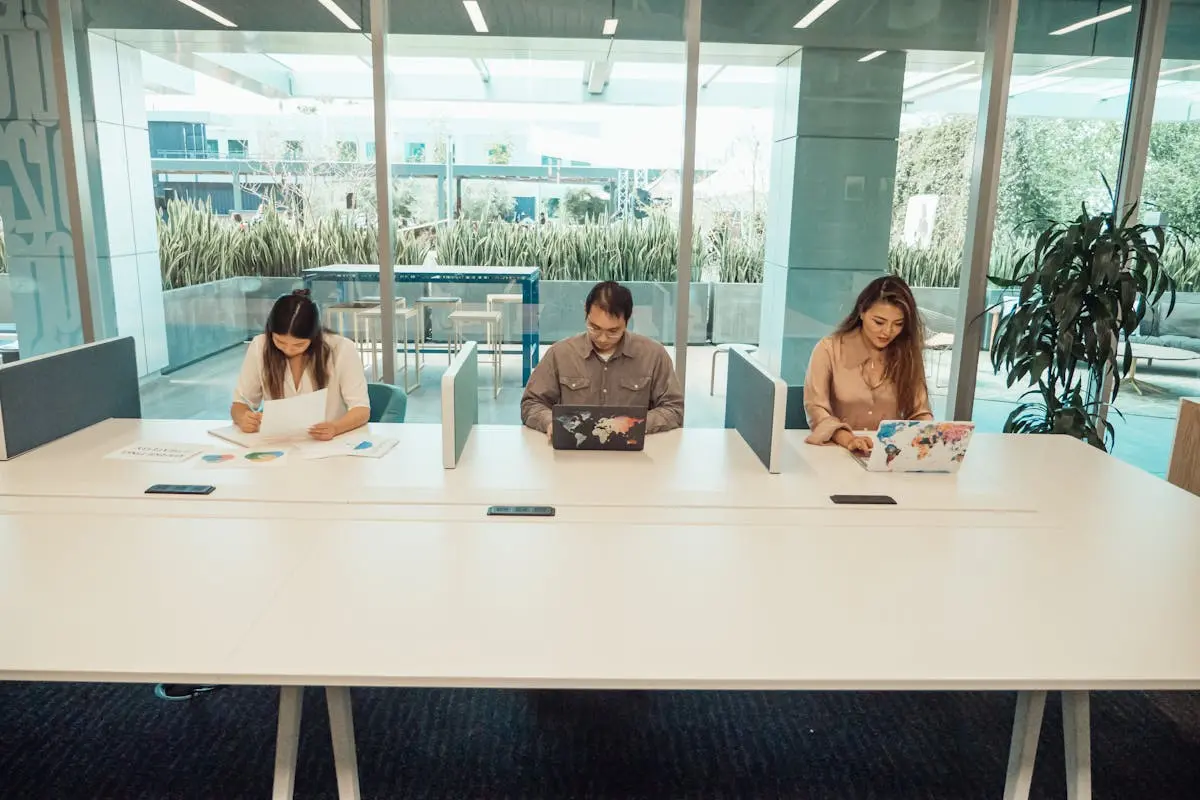Understanding the need for office space alternatives
Office space alternatives have become increasingly popular in the post-pandemic world. Many companies are now exploring flexible workspace options to adapt to the changing work environment. The need for office space alternatives arises from a desire to provide employees with a more adaptable and efficient working environment.

Companies are seeking solutions that offer a balance between remote work and in-person collaboration. This shift is driven by the recognition that traditional office setups may no longer fully meet the needs of modern workforces.
Benefits of office space alternatives
Office space alternatives offer a range of benefits for businesses in a post-pandemic world. These include:
- Flexibility to adapt to changing work schedules and needs
- Cost savings on traditional office leases and overhead expenses
- Increased employee satisfaction and productivity
- Access to a wider talent pool by allowing remote work
- Opportunity to create a more diverse and inclusive work environment
- Reduction in commuting time and environmental impact
- Enhanced agility and resilience in the face of future disruptions
Workspace flexibility and remote work options
Many companies are now offering their employees the flexibility to work from home or alternative office spaces. This allows employees to choose a workspace that suits their needs and enables them to work in a comfortable and productive environment.
Remote work options also provide employees with the freedom to manage their work schedules and maintain a better work-life balance.
Co-working spaces as a popular office alternative
Co-working spaces have become a popular office alternative as they offer a flexible and collaborative environment, allowing individuals and small businesses to share a workspace and resources.
According to a survey by Deskmag, the number of co-working spaces worldwide has been increasing by around 20% each year. With amenities such as high-speed internet, shared facilities, and networking opportunities, co-working spaces are providing a dynamic and cost-effective solution for many professionals and entrepreneurs.
Virtual offices: a viable alternative for businesses
With virtual offices, companies can reduce their overhead costs by eliminating the need for physical office space, which includes expenses such as rent, utilities, and maintenance. Virtual offices offer flexibility, allowing employees to work from anywhere and providing a more balanced work-life.
Businesses can also enhance their scalability and expand their reach by using virtual office services, including professional business addresses, mail handling, phone answering, and access to meeting spaces on an as-needed basis.
Hybrid workspaces: blending traditional and alternative office spaces
Hybrid workspaces are becoming popular as companies adapt to the post-pandemic world. They combine conventional office spaces with alternative options like remote work and co-working spaces. This allows employees to work both in the office and outside of it, providing flexibility while maintaining some of the structure and collaboration of a physical workspace.
As companies navigate the new landscape of work, hybrid workspaces offer a middle ground that accommodates both the need for face-to-face interaction and the benefits of remote work.
Factors to consider when choosing office space alternatives
When choosing office space alternatives, consider several factors such as location, cost, and flexibility. Here are some key points to keep in mind:
- Location: Consider the accessibility of the location for both employees and clients. A convenient and easily accessible location can contribute to the productivity and satisfaction of your team.
- Cost: Evaluate the overall cost of the alternative office space, including rent, utilities, and any additional amenities. Compare the expenses with the budget allocated for office space to ensure it aligns with financial plans.
- Flexibility: Look for options that offer flexibility in terms of lease terms, space customization, and expansion options. Flexibility is important, especially in a fast-changing business environment.
By considering these factors, you can make an informed decision when choosing office space alternatives in the post-pandemic world.
Implementing office space alternatives
As businesses adapt to the changes brought on by the pandemic, many are exploring office space alternatives to traditional work environments. This shift is driven by the need to provide a safe and flexible workspace, as well as to reduce overhead costs.
Here are some key points to consider when implementing office space alternatives in a post-pandemic world:
- Remote work options allow employees to work from home or other off-site locations, providing flexibility and reducing the need for dedicated office space.
- Co-working spaces offer a shared, collaborative environment for individuals and small teams, providing a cost-effective and social work setting.
- Flexible work schedules and hot-desking arrangements allow employees to use office space on an as-needed basis, maximizing space utilization and minimizing costs.
- Virtual office solutions, such as virtual addresses and reception services, provide a professional business presence without the need for a physical office space.
These alternatives can offer greater flexibility, cost savings, and safety measures while maintaining productivity and collaboration in a post-pandemic work environment.
Overcoming challenges of transitioning to office space alternatives
Transitioning to office space alternatives can present a range of challenges, but with careful planning and consideration, many of these obstacles can be overcome. One major challenge is ensuring that the new space meets your team’s specific needs, considering factors such as layout, facilities, and accessibility.
It’s also important to effectively communicate the benefits of the transition to employees, addressing any concerns and emphasizing the potential advantages. Establishing clear guidelines and protocols for the new space can help to smooth the transition and ensure that everyone is on the same page.
Conclusion: embracing the future of office spaces
Transitioning to a future of office spaces that embrace flexibility, collaboration, and technology is essential for businesses to thrive in the post-pandemic world. Adopting alternative office space options such as co-working spaces, flexible leases, and remote work arrangements can provide businesses with the agility and cost-effectiveness needed to adapt to evolving working environments.
As we move forward, businesses must remain open-minded and proactive in exploring new office space models and technologies that support a modern, dynamic workforce.






